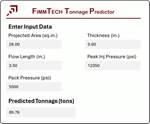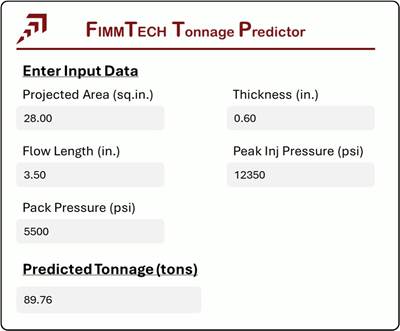Share
Read Next

Could AI help resin makers speed up development of new materials and grades while also connecting disparate operations? Source: Getty Images
Kafrit Group, an Israel-headquartered global producer of customized masterbatches and compounds for the plastic industry, is made up of multiple businesses around the world that span three continents. Kafrit came to MaterialsZone seeking to manage its chemicals, raw materials, formulation and finished goods data across all those diverse entities, each of which had different local data systems.
In addition, the company sought to accelerate R&D, create a single source of information for all R&D materials and foster cross-group collaboration. Kafrit says data harmonization across all its companies marked a major milestone that enabled faster delivery of new or adjusted products, better formulation suggestions and more effective alternative materials selection. The company found that the streamlined process also ensured easier compliance with regulations such as REACH.
MaterialsZone was co-founded by Assaf Anderson, who currently serves as its chief technology officer. Anderson’s academic background is in materials research, and he has a bachelor’s degree in chemistry, a master’s degree in nanomaterials and a Ph.D. in photochemistry. Before MaterialsZone, he worked as a postdoctoral research associate at the Bar-Ilan University Institute for Nanotechnology and Advanced Materials.
The incorporation of AI models is already showing significant acceleration to the formulation process by reducing trial and error, and enabling more efficient cross-company collaboration through the utilization of shared data and enhanced models. Since Plastics Technology spoke with MaterialsZone, the company has completed four successful guided R&D projects that involved formulations and development of new compounds, reducing overall R&D project time by 70%.
“There’s a lot of knowledge loss and a lot of rework that are being done. People developing the same formulations again and again and again.”
Anderson says MaterialsZone started its work with Kafrit by connecting information across several business units. When the companies first began collaborating, Kafrit had six subsidiaries, and that figure has since grown to nine, with entities around the globe in the U.S., Canada, China, Sweden, Germany and Israel. “There were all these different locations, and each site managed its own raw materials and products catalogs,” Anderson says.
He notes that the various subsidiaries were really like different companies seeking to become a single entity, despite disparate information systems. One of the first steps MaterialsZone took was to connect the catalogs, joining materials lists from different sites. “That already gives a lot of value,” Anderson says. “They can find alternative materials, and those materials are accessible in different geographies with blended data.”
The company also collected regulatory data compliance data, with the idea that if one individual collects a piece of information and another person could benefit from the work already being done, others can then filter and select materials based on this previously accomplished work so that research is created by the whole group, not individuals.
Further synergies arose from connecting product catalogs, which can identify overlapping products and provide access to all the materials in a systematic way, using keyword or attribute search or categories.
“Now the Kafrit Group benefits from a united, harmonized catalog of materials and vendors,” Anderson says. “By enabling the AI to harness a shared knowledge from experiments, products and formulations across the group, they can dramatically enhance the efficiency of their R&D and product development processes.”
MaterialsZone’s Origins
In the earliest days of the research that eventually led to the company’s formation, Anderson created an “experimental rig” for the discovery of new materials, applying machine learning for the first time in 2013. “Really for me, I saw the light there — things started coming together and I put my attention into this interface.” In particular, Anderson took interest in the intersection of different materials data, finding better ways to preserve data and looking at how users could leverage AI to get more out of the collected data.
MaterialsZone was incorporated in 2018 and began taking on outside clients, transitioning from what Anderson calls high-throughput localized research infrastructure to cloud-based systems that started serving more labs around them. “MaterialsZone was taking the concepts of better data management and data consolidation, and creating these shared environments where researchers can collaborate on data,” Anderson says,
Anderson’s view is that the traditional structure for many materials companies is not lean. “When you come to organizations that deal with materials in general, you see that typically the data that they need in order to make decisions is not available. It’s not accessible. It’s inaccurate,” Anderson says. “There’s a lot of knowledge loss and a lot of rework that are being done. People developing the same formulations again and again and again.”
“If you use AI together with this experiment, however, then you basically cut the number of trials because it’s slowly gathering enough data to build a predictive model, and say, ‘OK, just skip this experiment. I don’t need it.’”
Feeding that inefficiency was the fact that many companies operate with various divisions that undertake similar work in isolation. “There are a lot of siloed processes,” Anderson says. “When you look at an organization, you see that there are different stakeholders for the raw materials with different functions that need to collect or maintain different aspects of the materials’ information, whether it’s regulation, procurement, quality control, formulation or physical technical properties of materials.”
These stakeholders often maintain all the data in disparate locations using different information systems. Some materials companies that see these silos and inconsistent means and methods of data storage are seeking a better solution.
“Eventually people say, ‘I want to bring everyone together — to connect the information systems and create a single entry for each material, each product or each formulation and allow everyone to see the specific angle that they need,’” Anderson explains.
A New Method for Material Development
At present, MaterialsZone is using AI to collect more data, extracting relevant information from technical data sheets and certificates of analysis, and taking unstructured data from past reports and making it structured. Anderson says as part of that new structure, the system generates what are known as “descriptors,” which include technical, physical and even molecular markers. “These can help you make analytical AI more efficient, and analytical AI is the place where you can actually correlate or find and predict what would be the outcome of a virtual framework.”

Assaf Anderson, CTO MaterialsZone, began using an “experimental rig” to apply machine learning to material development in 2013. Source: MaterialsZone
With this capability, which is called Guided R&D, the program can recommend potential material formulations and predict their performance virtually. This enables the system to combine design of experiments with AI, but the AI might streamline how many and which experiments are necessary in material development.
“The idea is to recommend to the researchers how to create a set of experiments,” Anderson says, “but if you just do it by the book, then it’s a lot of iterations, a lot of cycles that you need to repeat to find the right performance. If you use AI together with this experiment, however, then you basically cut the number of trials because it’s slowly gathering enough data to build a predictive model, and say, ‘OK, just skip this experiment. I don’t need it,’ or ‘Perform this experiment to teach the model.’” From there, Anderson says researchers can make the best predictions and potentially cut the development cycle by more than 50%.
“The molecular descriptors — which basically can be number of aromatic rings, chain length, number of valence electrons, number of conjugated bonds — are pushed to the analytical AI,” Anderson says, “and it will tell you what’s the most important parameter in terms of synthesis, for example. Which molecule or active group would yield the best outcome for you in terms final performance?”
Related Content
Prices Up for PE, ABS, PC, Nylons 6 and 66; Down for PP, PET and Flat for PS and PVC
Second quarter started with price hikes in PE and the four volume engineering resins, but relatively stable pricing was largely expected by the quarter’s end.
Read MorePrices for PE, PS, PVC, PET Trending Flat; PP to Drop
Despite price increase nominations going into second quarter, it appeared there was potential for generally flat pricing with the exception of a major downward correction for PP.
Read MorePrices Up for All Volume Resins
First quarter was ending up with upward pricing, primarily due to higher feedstock costs and not supply/demand fundamentals.
Read MoreHow to Optimize Injection Molding of PHA and PHA/PLA Blends
Here are processing guidelines aimed at both getting the PHA resin into the process without degrading it, and reducing residence time at melt temperatures.
Read MoreRead Next
Testing: Software Accelerates Color Formulation for Plastics, Coatings and Textiles
X-Rite Patone’s latest release of its Color iMatch boasts better match performance reducing the number of formulation steps.
Read MoreThe Fundamentals of Artificial Intelligence and Machine Learning and Their Application to Injection Molding
As AI and ML continue to develop, they can eventually play a role in helping molders predict more accurately and, perhaps someday, model very close to the actual process results.
Read MoreSee Recyclers Close the Loop on Trade Show Production Scrap at NPE2024
A collaboration between show organizer PLASTICS, recycler CPR and size reduction experts WEIMA and Conair recovered and recycled all production scrap at NPE2024.
Read More























